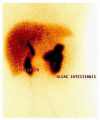Acute calculous cholecystitis: Review of current best practices
- PMID: 28603584
- PMCID: PMC5442405
- DOI: 10.4240/wjgs.v9.i5.118
Acute calculous cholecystitis: Review of current best practices
Erratum in
-
Correction to "Acute calculous cholecystitis: Review of current best practices".World J Gastrointest Surg. 2017 Oct 27;9(10):214. doi: 10.4240/wjgs.v9.i10.214. World J Gastrointest Surg. 2017. PMID: 29109854 Free PMC article.
Abstract
Acute calculous cholecystitis (ACC) is the most frequent complication of cholelithiasis and represents one-third of all surgical emergency hospital admissions, many aspects of the disease are still a matter of debate. Knowledge of the current evidence may allow the surgical team to develop practical bedside decision-making strategies, aiming at a less demanding procedure and lower frequency of complications. In this regard, recommendations on the diagnosis supported by specific criteria and severity scores are being implemented, to prioritize patients eligible for urgency surgery. Laparoscopic cholecystectomy is the best treatment for ACC and the procedure should ideally be performed within 72 h. Early surgery is associated with better results in comparison to delayed surgery. In addition, when to suspect associated common bile duct stones and how to treat them when found are still debated. The antimicrobial agents are indicated for high-risk patients and especially in the presence of gallbladder necrosis. The use of broad-spectrum antibiotics and in some cases with antifungal agents is related to better prognosis. Moreover, an emerging strategy of not converting to open, a difficult laparoscopic cholecystectomy and performing a subtotal cholecystectomy is recommended by adept surgical teams. Some authors support the use of percutaneous cholecystostomy as an alternative emergency treatment for acute Cholecystitis for patients with severe comorbidities.
Keywords: Biliary stones; Cholecystectomy; Cholecystitis; Cholelithiasis; Laparoscopy.
Conflict of interest statement
Conflict-of-interest statement: The authors declare no conflicts of interest.
Figures




References
-
- Sartelli M, Abu-Zidan FM, Catena F, Griffiths EA, Di Saverio S, Coimbra R, Ordoñez CA, Leppaniemi A, Fraga GP, Coccolini F, et al. Global validation of the WSES Sepsis Severity Score for patients with complicated intra-abdominal infections: a prospective multicentre study (WISS Study) World J Emerg Surg. 2015;10:61. - PMC - PubMed
-
- Shaffer EA. Gallstone disease: Epidemiology of gallbladder stone disease. Best Pract Res Clin Gastroenterol. 2006;20:981–996. - PubMed
-
- National Institutes of Health Consensus Development Conference Statement on Gallstones and Laparoscopic Cholecystectomy. Am J Surg. 1993;165:390–398. - PubMed
-
- Orlando R, Russell JC, Lynch J, Mattie A. Laparoscopic cholecystectomy. A statewide experience. The Connecticut Laparoscopic Cholecystectomy Registry. Arch Surg. 1993;128:494–498; discussion 498-499. - PubMed
Publication types
LinkOut - more resources
Full Text Sources
Other Literature Sources
Medical

